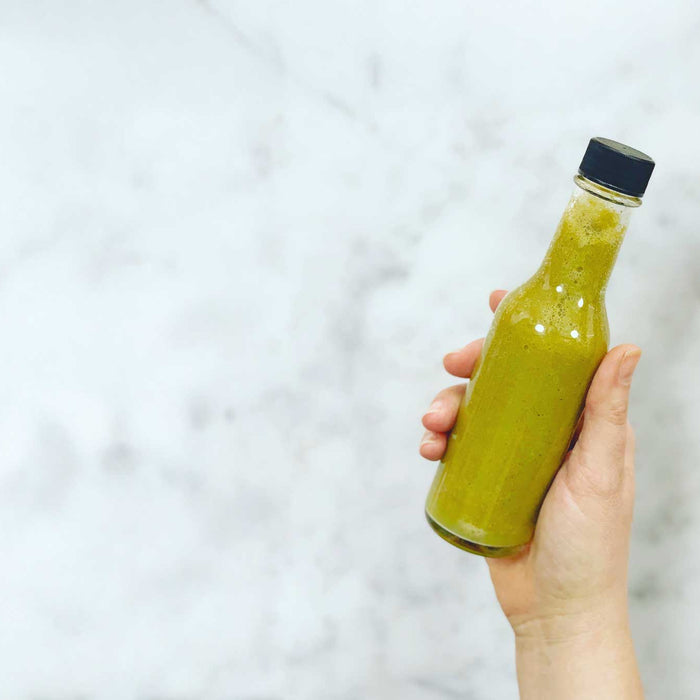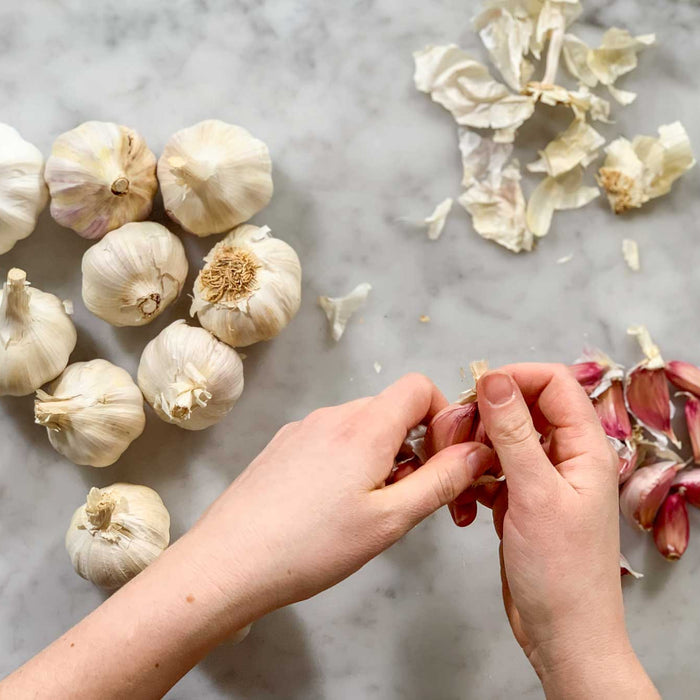
Joshua McFadden's Butternut Squash with Sausage, Sage & Spicy Chiles from Six Seasons of Pasta
A handmade casarecce recipe from Joshua McFadden’s Six Seasons of Pasta, featuring a silky butternut squash, sausage, and sage sauce.

Lacto-fermentation. It’s a strange phrase, we’ll totally admit that. It might even sound a little scary, but getting started with making lacto-fermented foods couldn’t be easier. And it’s how you make some of your favorite foods including naturally fermented pickles, hot sauce, sauerkreaut, yogurt, sourdough, lots of cheeses and so much more.
If you anything about fermentation, it might be from beer or wine. In brewing, yeast turns sugars (either from grape juice with wine or malted barley with beer) into alcohol. The alcohol is tasty. You throw a party. People get happy. Hurray for everyone!
So what’s the “lacto” in “lacto-fermentation” mean? Well, “lacto” is short for lactobacillus. It’s bacteria that’s literally everywhere around us. It’s on us and even in us. It’s floating in the air. It’s living on the surface of plants, fruits and fresh veggies growing in fields. It’s on our skin, our hands and it’s in our guts. It's a culture, and it comes in peace. It’s completely natural and even beneficial. Lactobacillus helps us digest the foods we eat.
If you’ve ever heard of food that’s filled with probiotics or touted as being great for a good, healthy gut, it’s likely got tons of lactobacillus.
In your gut, lactobacillus eats sugar and turns it into lactic acid. (You can see why people want it in their bellies.) The same process occurs when naturally fermenting foods. Which is amazing because lactic acid is a natural preservative. It helps ensure that fermented foods ferment and get tasty without all that pesky rotting action that would normally happen if you just left some vegetables in your fridge for a few weeks (or months).
So far, we know that lactobacillus transforms the sugars naturally found in fruits and vegetables into lactic acid. In doing this, it preserves and even heightens the flavor, texture and nutrients of what you’re fermenting. Plus, it gives food that extra umami complexity that makes lacto-fermented foods taste more exciting than what you started with. For example, pickles pack more of a flavor punch than cucumbers. Same goes for cabbage turning into kraut. (Don't get us started on kimchi!)
When fermenting most fruits and veggies, you add a little salt. Salt is super important to natural fermentation for a few reasons. Bad bacteria (the kinds that would spoil food) can’t stand lots of salt. Lactobacillus, however, can take some salt. So adding salt puts your good bacteria in the perfect position to focus on fermenting your food without having to fight other bacteria. Salt creates just the right environment for your ferment.
Another good thing to keep in mind is that higher levels of salt slow down fermentation. So if a sauerkraut typically takes you 1 week to ferment, raising the salt content may bump it up to 10 days or a little longer. Same goes for lowering the salt a little. It may speed up fermentation. We sometimes consider this in times of extreme heat (summer) and cold (winter). That’s because the warmer your fermenter, the faster it ferments. So take this into consideration when following a recipe. If it’s the middle of summer, and you find that your veggies are fermenting too quickly and getting softer than you’d like, add a little more salt than you normally would. (Speaking of recipes, we have a lots of pretty exciting fermented food recipes.)
And when selecting salt, use non-iodized salt. We typically use kosher salt, but there are lots of salts you can consider to great success.
There are two easy ways to add salt to your ferment. The first is a brine. You might brine harder vegetables that don’t have much water content like carrots (check out our Lacto-Fermented Carrot Stick Recipe) and beets. You’ll also want to brine fruits and veg where you want to keep the liquid inside (rather than drawing it out). The best example of this would be cucumbers that you want to keep crisp and juicy as pickles (Watch: How to Make Classic Dill Pickles video).
To make a brine, you typically add 2 tablespoons of salt to water (about 1 quart), stir to dissolve and pour over your veg. With that said, there are endless variations on this, so follow your particular fermentation recipe.
Another way to add salt to your ferment is by rubbing it all over your veg. This is how you make sauerkraut. You sprinkle salt (and whatever spices you like) over cabbage. The salt draws water out of the cabbage (kind of like how sugar is used to macerate berries) so that the cabbage creates its own salty brine. The brine creates the perfect environment for fermentation to happen.
Lacto-fermentation doesn’t need oxygen. It’s anaerobic. So to prevent oxygen from touching your fermenting veggies, you want to keep them submerged under brine while fermentation occurs. You do this by weighting it down with a fermentation weight. We designed a glass weight with a hole in the center. Being glass, it’s super easy to clean, which is important for us. And the hole in the center makes it easy to get in and out of the fermenter. It is the same weight we include in all of our fermentation kits.
Things like mold and other grossies can settle near the top of your ferment if your fermenting vegetables get exposed to too much air. With that said, this is strangely a point of contention. Some people are completely fine with leaving their ferment open to the air. It’s totally natural and traditional for lots of ferments. Fermentation will absolutely still occur.
These people might also be ok with peeling or scooping a layer of kinda gross stuff off the surface of their ferment prior to eating it. Which is really cool if you’re into that. We just aren’t, so we choose our equipment carefully. That way, we can eat all of our fermented foods without scaring people that come to our house.
Once you’ve successfully fermented some veggies, put them in a jar, and place it in the fridge to stop any further fermentation. Remember what we said about temperature? The fridge basically puts lactobacillus to bed. Fermented foods can last weeks if not months in the fridge. Before they go bad or mold, they may just get more sour than you’d like. So eat what you ferment and repeat! There’s so much you can do with lacto-fermentation.
We know this can all be a little daunting, and it’s important to remember no question is too basic. Here’s a super-basic primer on what goes into some of the most essential fermented foods:
Flour -> Sourdough
Cucumbers -> Classic Dill Pickles
Cabbage -> Sauerkraut
Napa cabbage -> Kimchi
Milk -> Yogurt
Looking for more recipes? Join our mailing list for a new fermentation recipe to your inbox every week. And check out past recipes in the Field Guide.
FarmSteady started with a simple idea: make projects like this easier to jump into.
$40.00
More about this kit →
A handmade casarecce recipe from Joshua McFadden’s Six Seasons of Pasta, featuring a silky butternut squash, sausage, and sage sauce.

Hot sauce probably isn’t the first thing that comes to mind when you think of honeydew melon. Honeydew is fresh, sweet, and cooling... everything that hot sauce usually isn’t. But that contrast is exactly what makes this recipe so special....

Fermented garlic is the flavor upgrade your kitchen has been waiting for—bold, deeply savory, and bursting with rich umami flavor. Not only does lacto-fermenting garlic mellow out its sharp bite, but it also creates a versatile, ready-to-use condiment that instantly...
Leave a comment